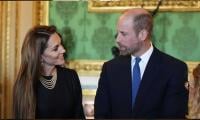CPEC realities
Amidst major cuts in developmental spending, questions have been plenty about the fate of the China-Pakistan Economic Corridor (CPEC). Reports have indicated that many CPEC projects are receiving no funding from the government. In this context, Prime Minister Imran Khan has reaffirmed Pakistan’s commitment to CPEC as part of his participation in the Belt and Road Forum in Beijing. If anything, Khan extended the scope of Pakistan’s CPEC commitments and even brought back good news vis-a-vis Pakistan’s trade relationship with China. The news of the second stage of the Free Trade Agreement between Pakistan and China on paper shows an agreement that is favourable to Pakistan: 90 percent of Pakistani exports to China will receive no tariffs, while 65 percent of Chinese exports to Pakistan will receive no tariffs. However, the gulf in trade balance of around $10 billion is such - in addition to the gap in technological proficiency and scale of industrialization – that the ostensibly favourable FTA could actually lead to Pakistan’s trade deficit with China worsening. The only way it can work is for Pakistan to expand its production capacity and the competitiveness of its exports in the international market.
The ability to address this gap in favour of Pakistan will depend on how the first Special Economic Zone (SEZ) under the CPEC agreement will be built. The crucial question will be whether it will be Chinese companies or Pakistani ones that will the key investors in the SEZ planned in Rashakai, Khyber-Pakhtunkhwa. Beijing has helped out Pakistan amidst the ongoing fiscal crisis – and its long-term investments in Pakistan mean that China is likely to be invested in the stability of Pakistan’s economy. Increasing Chinese participation in the economy could be a way to ensure that commitment. However, opening up the economy more to a powerful economic country comes with risks. If Chinese investors are to get long-term tax breaks in SEZs inside Pakistan, then the benefit to Pakistan of these projects must be re-evaluated. However, China is expanding its role in socio-economic development projects, which has long been the purview of Pakistan’s Western allies with a $1 billion agreement.
The news that the ambit of CPEC is expanding will be seen as good, but one must wonder how this will play out at a time when the government faces severe fiscal challenges and a feeling of a lack of direction in terms of economic policymaking. The policy dimension is only one of the challenges moving ahead. The impact of such agreements of Pakistan’s economic health needs to be evaluated impartially – instead of believing the hyperbole. Pakistan is now five years into the CPEC agreements, which is sufficient time to begin to make objective assessments of the costs and benefits of the project to the country’s economy.
-
 Prince Harry Hopes To Show Archie, Lilibet Where He 'grew Up'
Prince Harry Hopes To Show Archie, Lilibet Where He 'grew Up' -
 Kristin Davis Dicusses Fate Of Her Sex And The City Character
Kristin Davis Dicusses Fate Of Her Sex And The City Character -
 Zara Larsson Steps Up Criticism Against 'evil' Policies
Zara Larsson Steps Up Criticism Against 'evil' Policies -
 Adam Sandler Jokes About Aging As He Accepts Career Honour
Adam Sandler Jokes About Aging As He Accepts Career Honour -
 Royal Stalker Cases Increase Following Harry, Meghan's Marriage: Report
Royal Stalker Cases Increase Following Harry, Meghan's Marriage: Report -
 Sarah Ferguson Eyes Princess Diana’s Private Letters In Bid To Secure Future
Sarah Ferguson Eyes Princess Diana’s Private Letters In Bid To Secure Future -
 Andrew Plots Secret Sales Of Royal Jewels Amid Royal Lodge Eviction
Andrew Plots Secret Sales Of Royal Jewels Amid Royal Lodge Eviction -
 Abbott Elementary Star Chris Perfetti Hints At What To Expect From Season 5
Abbott Elementary Star Chris Perfetti Hints At What To Expect From Season 5 -
 Prince William Always Ready To Step Up: ‘He’s Barely Able To Contain His Fury When Kate’s Involved’
Prince William Always Ready To Step Up: ‘He’s Barely Able To Contain His Fury When Kate’s Involved’ -
 Florida Woman ‘tricked Innocent Movers Into Helping Her’ $7k Burglary: Report
Florida Woman ‘tricked Innocent Movers Into Helping Her’ $7k Burglary: Report -
 Harry Deserves Top Protection As King Charles’ Son, Prince William’s Brother
Harry Deserves Top Protection As King Charles’ Son, Prince William’s Brother -
 Meghan Markle Receives Key Advice As Experts Warn She’s Doing Too Much
Meghan Markle Receives Key Advice As Experts Warn She’s Doing Too Much -
 Kelly Clarkson Weighs In On Life Without The Father Of Her Children
Kelly Clarkson Weighs In On Life Without The Father Of Her Children -
 Paul Mescal, Gracie Abrams Committed To 'long Distance' Relationship: Source
Paul Mescal, Gracie Abrams Committed To 'long Distance' Relationship: Source -
 Street Fight Turns Bloody As Innocent Bystander Shot In The Face
Street Fight Turns Bloody As Innocent Bystander Shot In The Face -
 Tom Blyth Shares His Two Cents On The Importance Of Rom Coms
Tom Blyth Shares His Two Cents On The Importance Of Rom Coms



